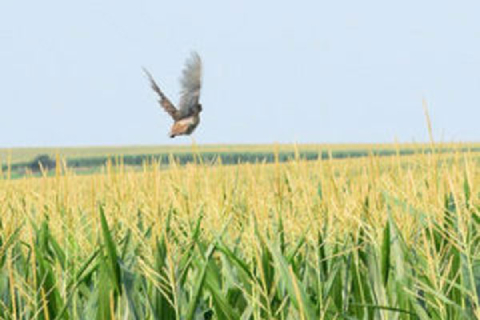By Dar Danielson (Radio Iowa)
The wet spring could lead to a drop in the number of pheasants in Iowa. Iowa DNR wildlife research biologist Todd Bogenschutz says the switch in the weather pattern can really impact pheasants.
“We went from major drought to major flooding in a pretty short time frame, and unfortunately it coincided with peak in nesting,” he says. Bogenschutz says several factors make wet springs tough on nesting pheasants. “We’re just not sure if the hens aren’t quite as attentive, maybe less of the eggs are fertile if they get chilled. You know and then we think in wet years you know, obviously predators, most to predation occurs by smell and when you have wetter conditions, scenting conditions are better, and so that could be part of it,” he says.
Bogenschutz says the wet spring can also make it tough on the food source for young birds. “Wetter cooler springs could impact the number of insects that are out there too, probably maybe suppresses it a little bit. So maybe the chicks don’t have as much forage base as they do and we tend to have our good years which tend to be warm and dry,” Bogenschutz says. He says hunters had their best harvest last year since 2007.
The relatively mild winter helped more pheasants survive, so it’s hard to tell what their fall pheasant survey will show. “It was a really good fall last year. So I think people were thinking, holy cow, we could be phenomenal if everything lined up,” he says. “but you know that didn’t quite come to fruition. The roadside counts will be interesting, I expect we will maybe show some small increases in some areas, but I think especially up in northwest and north central areas where we got that heavy rain, that our counts are probably going to be lower.” Bogenschutz says lower counts doesn’t mean hunters won’t find pheasants.
“We’re still gonna have birds out there. You know, we had reports of broods early and actually fairly large, a little bit earlier than I normally get them. We definitely did have some early hatch because of I think the mild winter and how quickly it went away this year,” he says. The annual roadside pheasant surveys are held in August and the results on pheasant numbers will be released in September.




